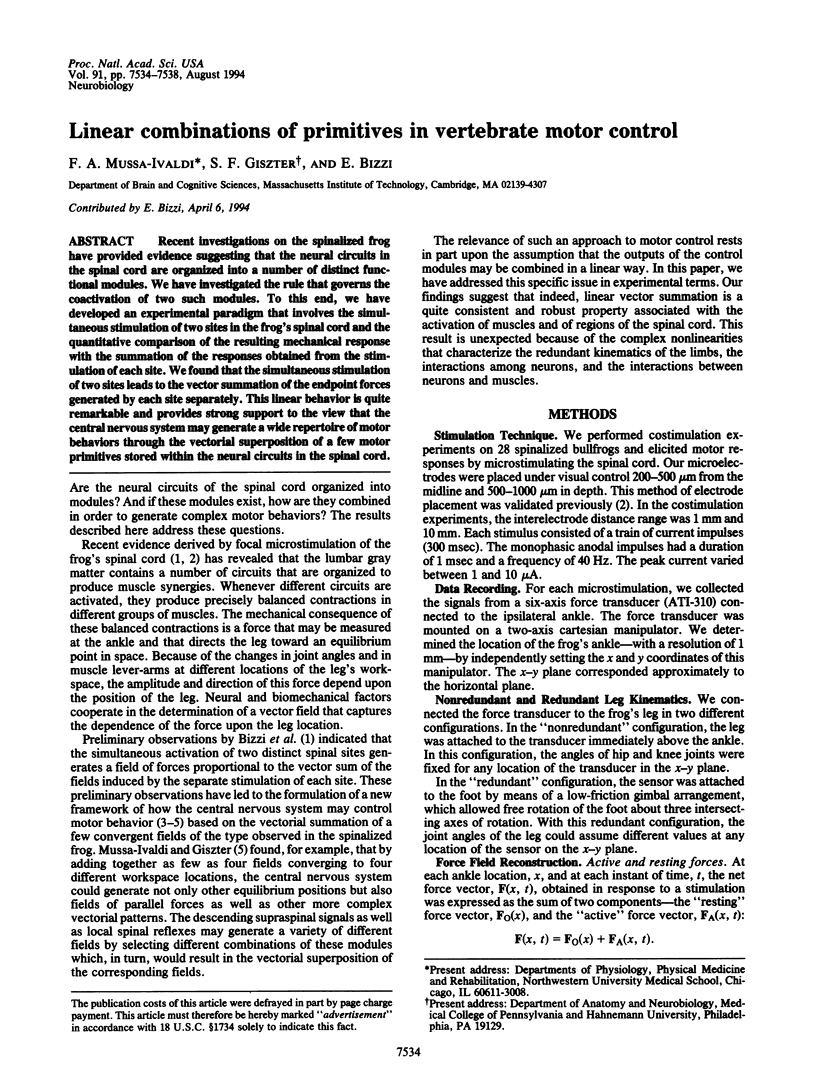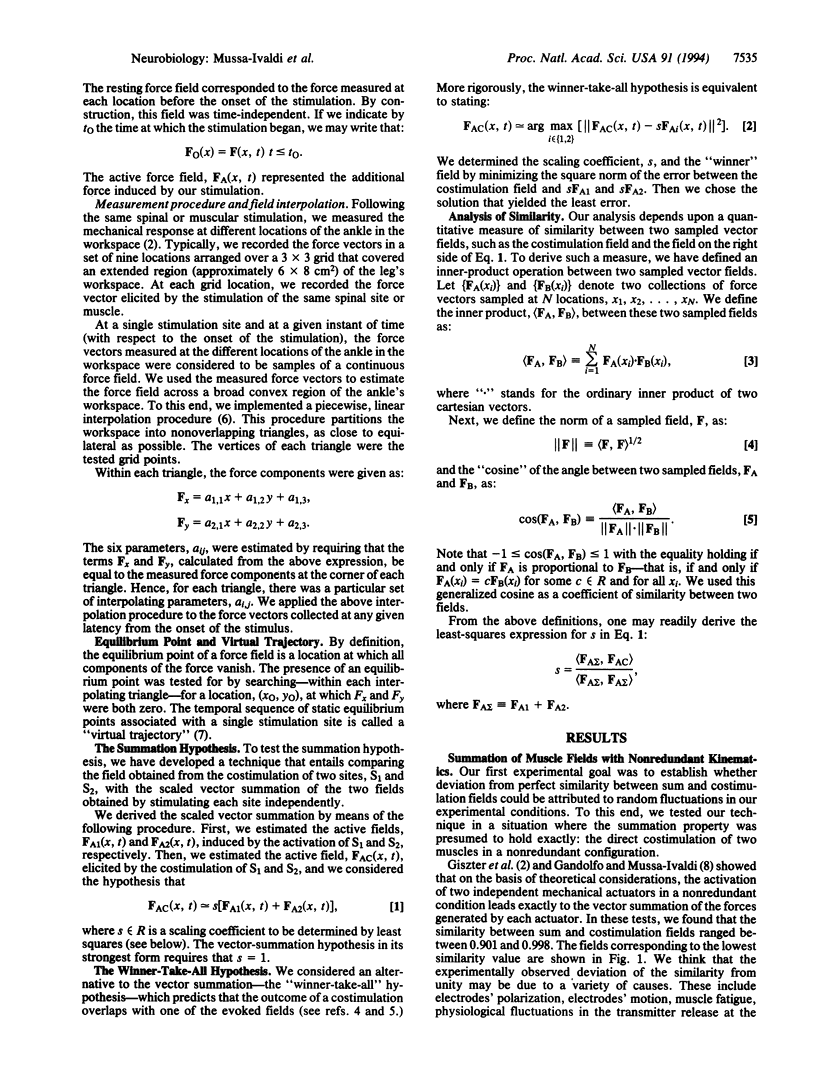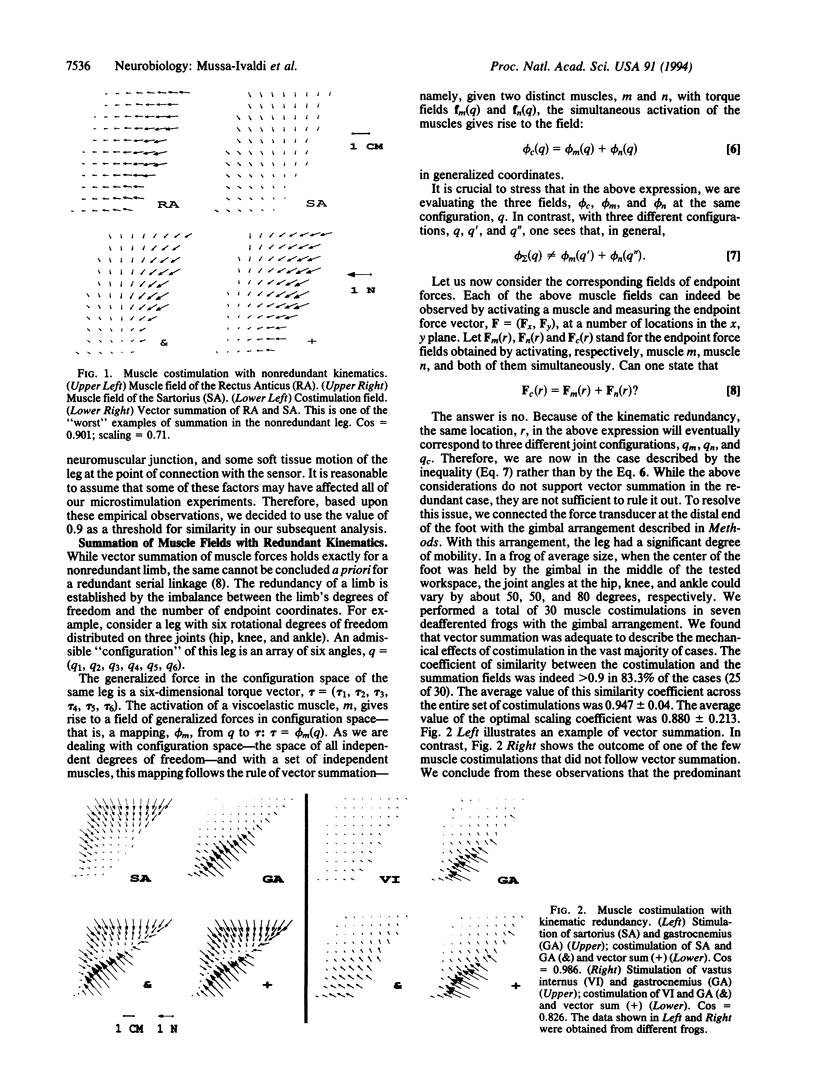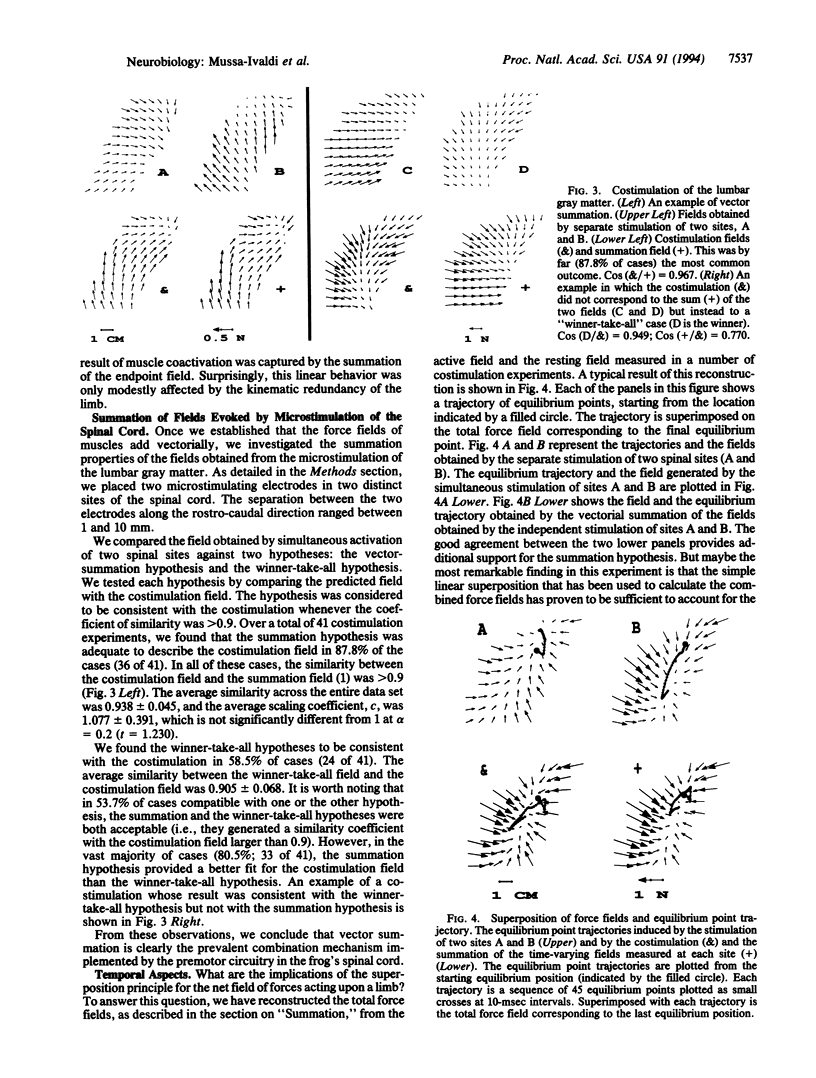Abstract
Recent investigations on the spinalized frog have provided evidence suggesting that the neural circuits in the spinal cord are organized into a number of distinct functional modules. We have investigated the rule that governs the coactivation of two such modules. To this end, we have developed an experimental paradigm that involves the simultaneous stimulation of two sites in the frog's spinal cord and the quantitative comparison of the resulting mechanical response with the summation of the responses obtained from the stimulation of each site. We found that the simultaneous stimulation of two sites leads to the vector summation of the endpoint forces generated by each site separately. This linear behavior is quite remarkable and provides strong support to the view that the central nervous system may generate a wide repertoire of motor behaviors through the vectorial superposition of a few motor primitives stored within the neural circuits in the spinal cord.
Full text
PDF




Selected References
These references are in PubMed. This may not be the complete list of references from this article.
- Bizzi E., Mussa-Ivaldi F. A., Giszter S. Computations underlying the execution of movement: a biological perspective. Science. 1991 Jul 19;253(5017):287–291. doi: 10.1126/science.1857964. [DOI] [PubMed] [Google Scholar]
- Georgopoulos A. P., Kettner R. E., Schwartz A. B. Primate motor cortex and free arm movements to visual targets in three-dimensional space. II. Coding of the direction of movement by a neuronal population. J Neurosci. 1988 Aug;8(8):2928–2937. doi: 10.1523/JNEUROSCI.08-08-02928.1988. [DOI] [PMC free article] [PubMed] [Google Scholar]
- Giszter S. F., Mussa-Ivaldi F. A., Bizzi E. Convergent force fields organized in the frog's spinal cord. J Neurosci. 1993 Feb;13(2):467–491. doi: 10.1523/JNEUROSCI.13-02-00467.1993. [DOI] [PMC free article] [PubMed] [Google Scholar]
- Hogan N. The mechanics of multi-joint posture and movement control. Biol Cybern. 1985;52(5):315–331. doi: 10.1007/BF00355754. [DOI] [PubMed] [Google Scholar]
- Lee C., Rohrer W. H., Sparks D. L. Population coding of saccadic eye movements by neurons in the superior colliculus. Nature. 1988 Mar 24;332(6162):357–360. doi: 10.1038/332357a0. [DOI] [PubMed] [Google Scholar]
- Mussa-Ivaldi F. A., Giszter S. F. Vector field approximation: a computational paradigm for motor control and learning. Biol Cybern. 1992;67(6):491–500. doi: 10.1007/BF00198756. [DOI] [PubMed] [Google Scholar]


